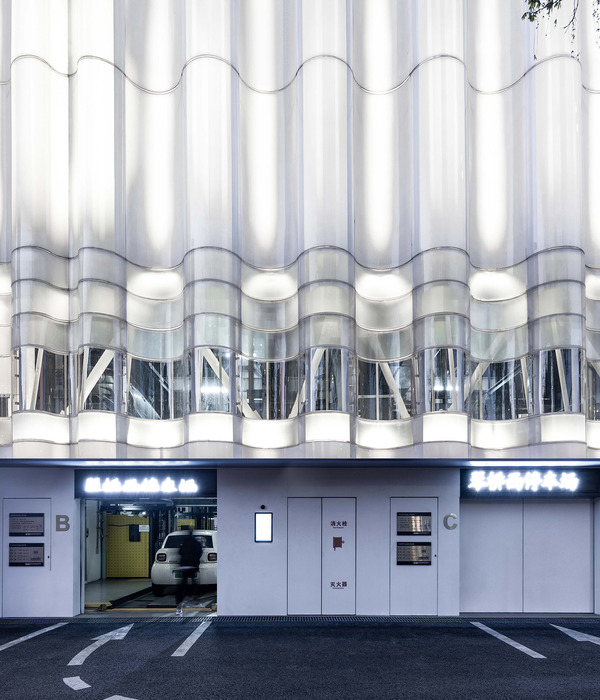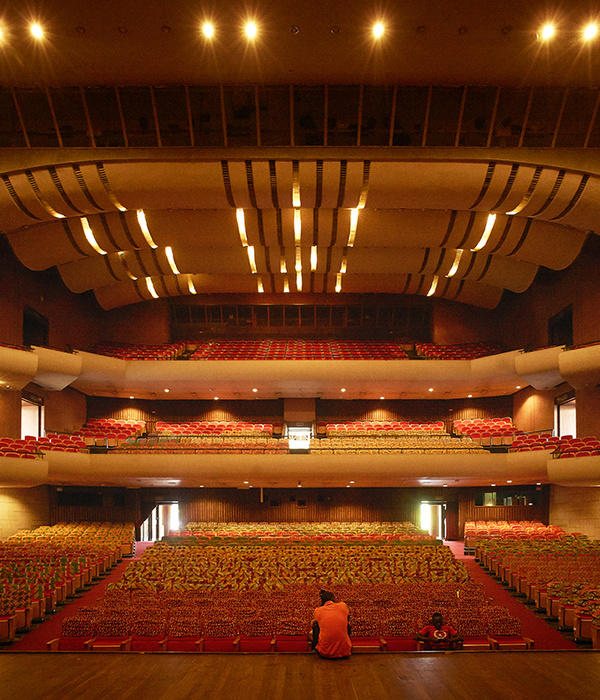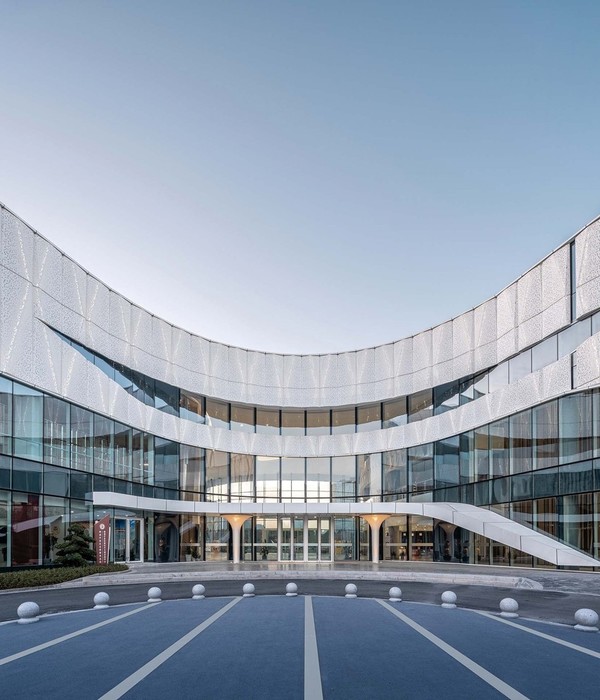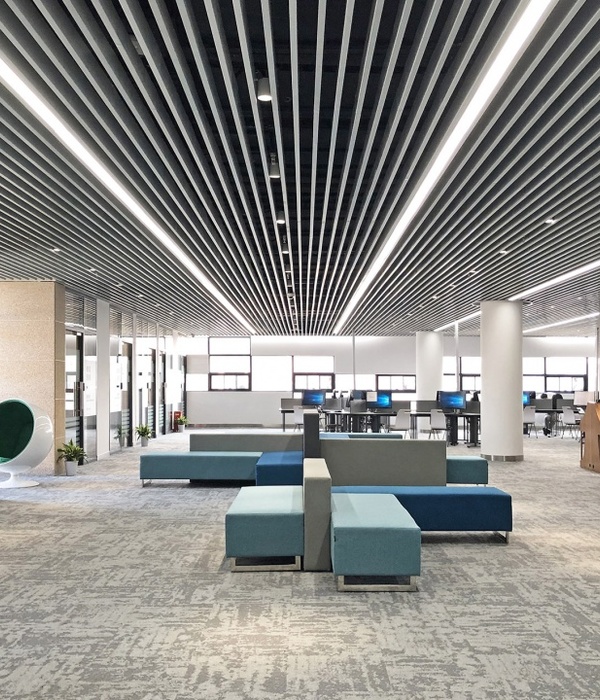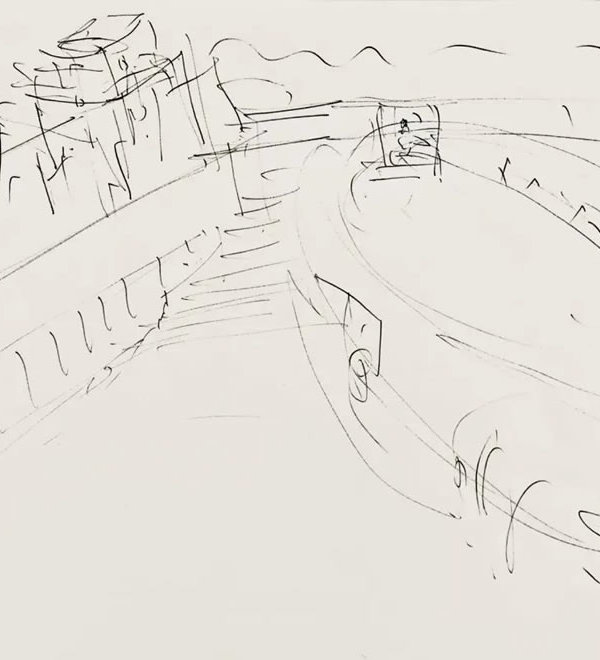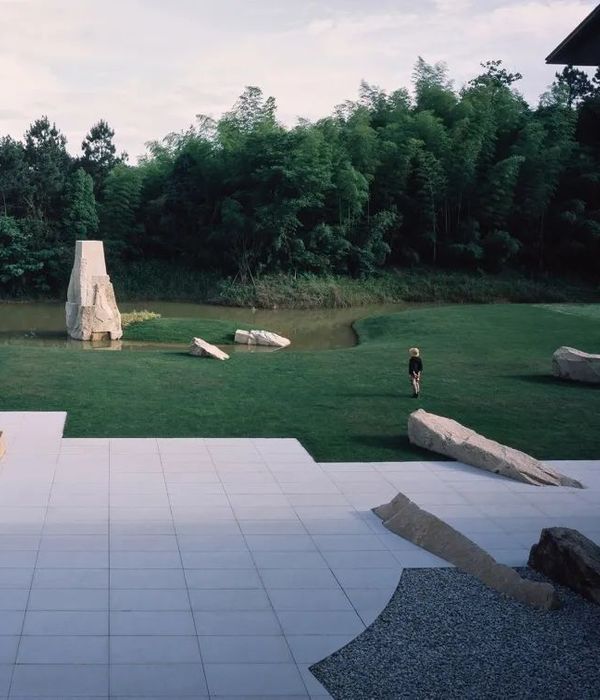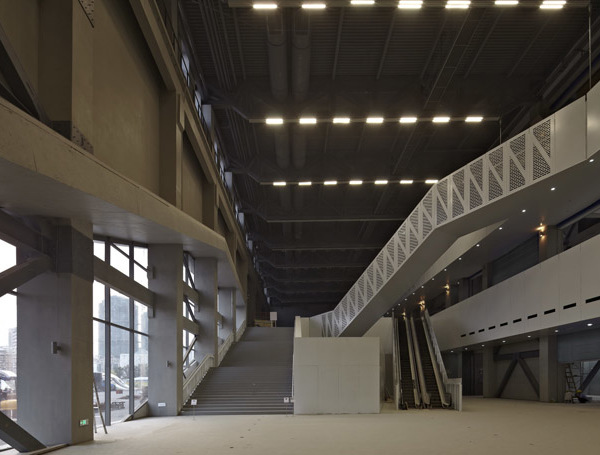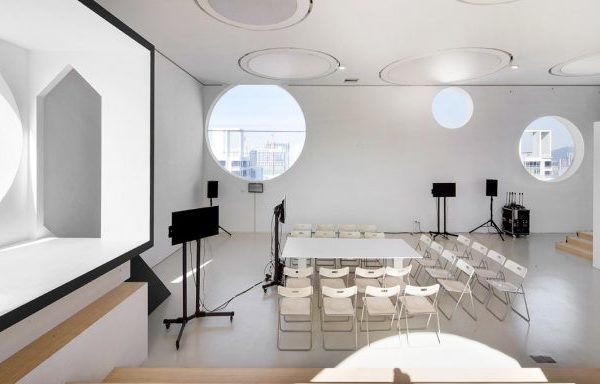法国XTU建筑设计事务所
法国馆可以简单理解为木材打造的,被颠倒过来的农业山区意向建筑,原本种在地面的农作物将会悬挂种植在天花上。而下方被”山体”支起的空间用作人类活动场地。
当提到食物时,你怎样用符号表现法国的特征?
消费和生产如何变化?
你如何展现来自法国的创新?
市场原型
同农业专家和社会学专家的谈话中,建筑师开始工作。这给他们法国食品标识的一个图像,他作为绝妙的地理和家谱多样性的产物。这些自然资源塑造了高峰和低谷,气候分区,人们使用这片土地的方式,不同的文化和产品-和它的没事。这次比赛规格以Halles de Baltard市场为参考,它是生产和消费的里程碑,是农业食品链中所有环节的永恒汇合。最终,室内市场作为所有事物相聚的交叉口,也决定产生它认为是典型的市场;在一个巨大屋顶之下的独立空间。
How do you symbolise France’s identity when it comes to food?
How has consumption and production changed?
How do you showcase innovations from France?
The market archetype
The architects began by talking with agriculture experts and sociologists, which gave them an image of France’s food identity as a product of its amazing geological and genealogical diversity. These natural resources shaped the peaks and valleys, the climate regions, the way people use the land, the varied cultures and products – and its superb cuisine. The contest specifications referenced the Halles de Baltard market, a landmark of production and consumption, a timeless confluence of all the links in the agri-food chain. XTU galvanized the idea of a covered market as the crossroads where all foods meet and decided to produce what it considers the archetypal market: free-standing spaces sheltered under one huge roof.
内置景观法国象征着一个文化奇迹,工业技术,和美好的生活,展现了设计师勒阿努克通过创造一个内置景观来展示世界所有的这些东西同时描绘了法国地区的地理多样性,这是独特而农业产品和烹饪传统。
当谈论起主题“补充地球,生命能源”时,XTU说,“地形作为食物新革命的肥沃土地,他同建筑物一起代表了法国地区的希望。
这一场馆的建设受到法国六角形形状的启发,像似由建筑转变向各处提升。这一建筑景观在天花板下部悄悄进入“市场”,这是人群涌入这个2000㎡的空间时唯一看到的部分。
景观天花板由回忆的涟漪所扭曲,产生了一种显然的特征,抽象地描绘了法国风土的宽度。这是Adeline Rispal展览设计的科学内容。
A built landscape
«France symbolises a cultural wonder, industrial know-how, the good life,» reflects architect Anouk Legendre. «That is what we wanted to show the world by inventing a « built landscape » that all at once portrays the geographic diversity of France’s regions, its unique agricultural offerings and culinary traditions.»
When asked about the theme «Feeding the planet, energy for life,» XTU says, «Terrain as fertile ground for the new food revolution,» with a building that stands for the promise of France’s regions.
The pavilion, inspired by France’s hexagonal shape, seems to have been pushed up here and there by tectonic shifts. This « built landscape » has sidled into the «market» on the underside of the ceiling, the only part crowds will see as they stream into the 2,000 m² space.
Contorted by reminiscent ripples, the « landscape ceiling» casts a striking feature that abstractly depicts the wide breadth of France’s terroirs. That is what introduces the scientific content staged by Adeline Rispal’s exhibition design.
结构原理
上下颠倒
为了吸引游客,建筑师通过推动“拉力因素”来设计一个全面的方法。这个建筑邀请人们从外面进入到里面。一旦穿过展馆的大门,游客就进入了多山的农村的颠倒世界。
树状的柱子支撑着长时间有人居住的房子,包括房子的框架,空间,功能区域和通道。一楼设有展览摊位,实际的市场和合作伙伴的区域。不同于传统的室内市场,产品展示在摊位上,这个版本展现了由结构所创作的,展馆中的房间里的多个主题。这些拱顶提供了产品的种类,例如区域特色,美味佳肴,科学和生物技术研究,农业生态,新的农业食品技术,基因的发现,生命化学和有益菌群。下一层有办公室和VIP房间。顶层是餐厅。
THE STRUCTURAL PRINCIPLE
Upside-down
Eager to lure in visitors, the architects engineered a full-immersion approach to the stagecraft by pushing the ‘pull factor’. The « territory building» invites people from the outside to embark on a journey inside. Once past the pavilion’s doors, visitors are plunged into the upside-down world of the hilly Countryside.
Tree-like pillars support the «lived-in roof» that frames the spaces, functional areas and pathways; the ground floor houses the exhibit booths, an actual market and partner zones. Unlike conventional covered markets where products are displayed in stalls, this staged version features a variety of themes the pavilion covers in chambers created by the structure. These «vaults of plenty» serve up a menu of offerings like regional specialities, delicacy tastings, scientific and biotechnological research, agro-ecology, new agri-food technologies, genetic discoveries, life chemistry and beneficial flora. The next floor hosts offices and VIP rooms. The top floor is a restaurant.
自由形式胶层压结构完全是由法国木材构成;云杉内地和落叶松的外观。每一个建筑元素-主要和直接结构,天花板到地板-是由由联锁片形成一个统一的建筑物,同时描画出外观和内部区域的轮廓。木工西蒙使用使用超高精度数字控制机器人,当结合建筑软件时,删除框架的每一个角度。
主要结构是由格构梁构成,柱子支撑间距为4.5米,通过一个支撑框架没1.5米开缝来支撑。这个结果是一些列高度统一的直角隔间。这个项目是开创性的,因为这个直角的框架是“崎岖的”缺口),形成凹凸形状叫做叫做“自由形式”,这创造了了令人惊叹的拱顶效果。法国展馆复杂的几个形状创作了曲线的激素转变,这证明了木材能过形成难以预料的有机轮廓。
除了它的戏剧形式,这个大帐篷是法国在木材建筑上的展示,利用Résix专利的隐形紧固系统。
低科技绿色架构法国馆采用了低科技方法,因此整个建筑可以被拆分或组合到一起。带着为热提取工艺设计的空气对流和中央天窗,景观市场将保持自然通风和凉爽,使其成为低能耗建筑。
Free forms
The glue-laminated structure is completely made of French wood: the interior in spruce and the exterior in larch. Every building element – from the main and supporting structures and ceiling to the floorboards and façdes – is made of interlocked pieces forming a single unified edifice that simultaneously outlines the exterior casing and the interior expanse.
The carpentars Simonin used a super-high precision digitally controlled robot that when combined with the architecture software cut out every angle of the Framework.
The main structure is made of lattice girders and pillars spaced at 4.5 m and braced by a supporting framework slotted in every 1.5 m. The result is a series of highly uniform right-angle cubicles. The project is ground-breaking because this orthogonal frame is“cragged” (notched) into uneven shapes called “frees”that create a stunning vault-like effect. The complex geometry of the French Pavilion’s framework creates a roller coaster of curves that demonstrates wood’s ability to mould into unexpected organic contours.
Beyond its dramatic form, this marquee is a showcase for French innovation in wood architecture using invisible fastening systems patented by Résix®
A low-tech green structure
The French Pavilion adopted a low-tech approach, so the entire building can be taken apart and put back together.
With its cross-ventilation and the central clerestory designed for its heat extraction process, the « landscape market » will be naturally ventilated and cool, making it a low-energy consumption building.
750块不同的弯块总计310立方米
1139块直块总计284立方米
172块面块(落叶松)总计195立方米
或2061块生成780立方米
– 750 different curved pieces totalling 310 m3,- 1,139 straight pieces totalling 284 m3,- 172 surface pieces (larch) totalling 195 m3,or 2,061 pieces spanning 780 m3.
营养充足的领土
游客进入市场之前,他们会穿过一片被分成条状的农场。每条都被设计得像皱纹一样,并且种上不同种类的农产品如谷物、蔬菜、果树和家畜等,以此彰显法国土地的多样性及丰富性。当他们穿过营养充足的领土时,他们会看见呈现在三块大屏幕上的一系列风景图片。
基于信念,那片建筑有一天会变得富饶的,XTU希望这些墙面能被用来当做承载攀援植物苗的格架。这些愿望将会在2015年世博会结束后的十月份实现。
NOURISHING TERRITORY
Before visitors go into the market, they walk through a farmed «field» divided into strips. Each few strips are designed like furrows that display different sorts of agricultural production like grains, vegetables, orchards and livestock to illustrate the diversity and abundance of France’s soil. As they make their way through the nourishing terrain, they watch a series of landscapes played on three large screens.
Based on its belief that buildings will one day be fertile, XTU wanted these façades to be used as trellises for hop vine seedlings. The hops will be harvested in October at the end of Expo 2015.
XTU建筑事务所设计了贵宾室,为他们策展以及放置波林.丹尼尔、帕斯卡.科斯塔因和让.雅克.帕洛拍摄的涵盖了食物以及浪费食物资源主题的精美艺术照片。
Abundant scenery design
As visitors walk under the pavilion’s archway, they are greeted with a plethora of materials, smells, vegetables, products and technologies. The pavilion is granary and barn, cathedral and beehive, innovation lab and experimental hub, land of discovery and classroom all rolled into one. Adeline Rispal has designed scenes to cover a range of themes like precision farming and agroecology, advances in genetics, beneficial flora, life chemistry, aquaculture, algae, climate change, water, the nutritional value of foods and the latest agri-food technologies. The French General Commission worked with intertrade research groups and private partnerships to develop a scientific programme that covers a range of topics from local to global, conventional to hightech and cottage industry to the most cutting-edge industrialization. The French farming and agri-food model will also be the subject of colloquia, conferences, discussion forums and videoconferences, not to the mention cooking demonstrations, culinary events, tastings and cultural gatherings.
XTU designed the scenery for the VIP spaces, for which they curated and installed fine art photographs by Pauline Daniel, Pascal Rostain and Jean-Jacques Pallot conveying the theme of food and wasted food Resources.
▼主平面图 Master Plan
▼东立面图 East Elevation
▼西立面图 West Elevation
▼横截面图 Cross Section
MIRE:
法国XTU建筑设计事务所,更多请至:
{{item.text_origin}}

